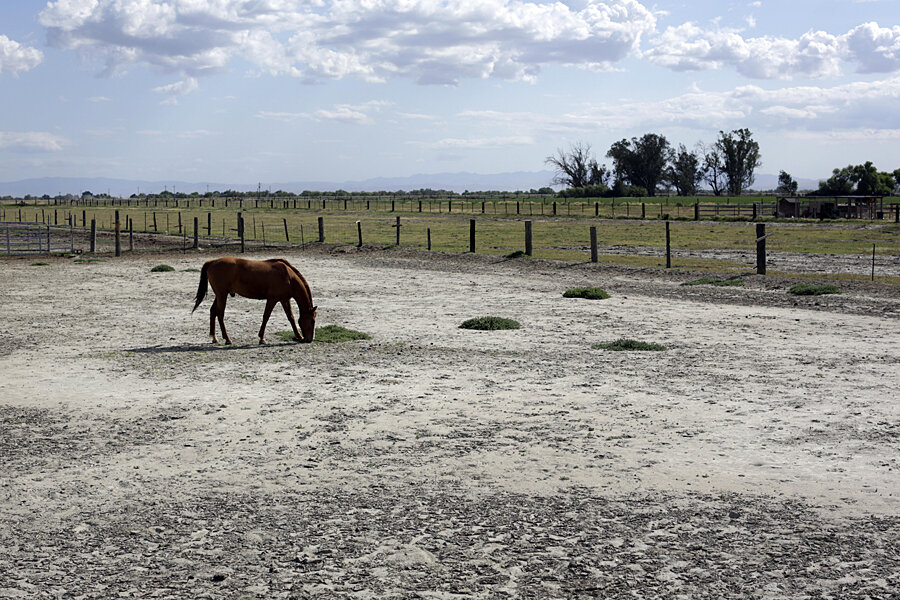Droughts' rise in severity raises a question: Where is the long-term policy to help farmers?
Loading...
With episodes of drought increasing in severity, frequency, and lasting for longer and longer periods, even the most considered and steadfast risk management plans fail. This year, in Australia and the United States, whole states have been drought declared, in Queensland and California, respectively. In response to these crises, governments have reacted in different ways, from crisis aid to ensure farmers (and their families) do not go hungry at night to longer-term adaptation initiatives.
The UN Convention to Combat Desertification (UNCFF) Executive Secretary Luc Gnacadja, stated: “Drought is not a charismatic disaster, like a tsunami or an earthquake. It doesn’t happen overnight. Instead it is slow and silent, insidiously creeping up on us. That is why its impact is often hugely underestimated. Drought causes more deaths and displacement than tsunami and earthquakes combined.”
Policymakers across the world have attempted to offset the unexpected consequences of the drought in different ways. One key similarity, however, does exist—a focus on crisis management. Professor Linda Botterill, Professor in Australian Public Policy at the University of Canberra, stated that faced with worsening conditions, government’s scramble to meet the immediate needs of the drought-stricken.
Central to the crisis management approach is assistance via emergency funding to assist farmers in drought-affected areas. In Australia, more than 80 percent of the state of Queensland has been drought-declared over the past year—the largest area of the state ever to be declared in a state drought.
In response, Prime Minister Tony Abbott, announced a drought assistance package worth approximately US $300 million, which is in addition to state government funding of approximately US $60 million. Key components of the package included: more generous criteria for accessing income support, drought concessional loans, assistance to install water-related infrastructure, as well as social and mental health services.
The recent package is short-term policy response that reacts to the most immediate and damaging effects of drought. Reactions to this type of assistance have argued that the words “support” and “relief” conjures up a short-term fix only— a “leg-up”, a prop, a brace. Botterill claimed: “In the absence of a considered drought policy package, governments run the risk of ad hoc policymaking. That is not in the best interest of farmers, their communities, or the sector as a whole.”
Generally, there appears to be a long-term policy void, stated National Farmers Federation President, Brent Finlay. “This package is designed to provide assistance here and now. We need a drought policy framework that (also) focuses on preparedness,” highlighted Finlay.
In June, a High Level Meeting on National Drought Policy Report, stated: “until 2013, despite the repeated occurrences of droughts, no concerted efforts on a global level were made to initiate a dialog on the formulation and adoption of proactive national drought policies.” There is a role to play for government to play to focus risk reduction with complementary drought mitigation or preparedness plans, stated the report.
In California, a US $687 million drought relief package was recently signed into law. A significant portion of this funding—US $549 million—is going towards fast tracking bond money into a number of key water developments. These include the recapturing of storm water, recycled water, and improved management of groundwater. Although the cost and benefit of such projects has not been verified, the Californian infrastructure projects are illustrative of a longer-term focus on risk management in the context of drought.
Drought is a complex problem with severe economic, social, and environmental consequences. Although this complexity necessities hard work and a collective approach, the rewards can be huge. Luc Gnacadja of the UNCCD highlighted, “building drought resilience is a long-term smart investment with a guaranteed high return.”







